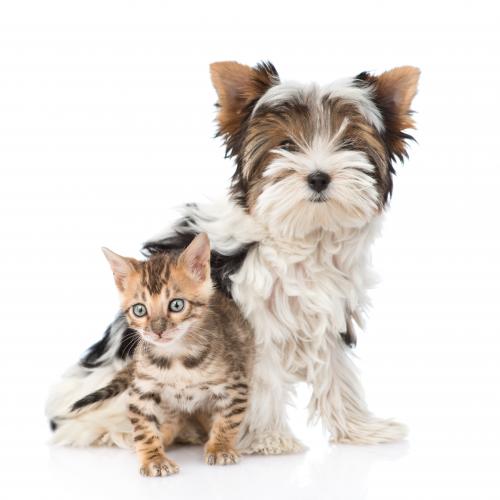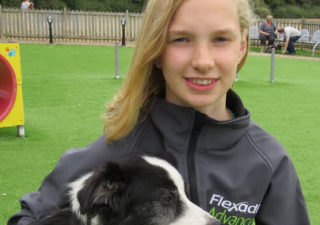
Introducing a new pet?
Back to overviewIntroducing a new pet to a household is a big decision and it’s important to consider how it will affect your current pets. Often a new pet could be a negative rather than a positive change for your current pet. You might think a new puppy will brighten your elderly dog, but it’s possible the puppy could wear your older dog out and actually cause more upset. Think it through carefully and seek professional advice. If you do decide to get a new cat or dog, it’s important for both your existing animal and your new pet that you take time to help them both cope with the introduction. Remember to keep it slow.
Here are our 6 top tips to a successful introduction:
1) Try Zylkene - 1 -2 days prior to bringing home your new pet, give both pets Zylkene.
2) Initial Separation - keep your new pet and current pets in separate but adjoining rooms. Your new pet should be confined to one room and your current pet to the rest of the house.
3) Feeding - feed both pets either side of a door so they associate the positive experience of food with the new smells of each other. If both pets are dogs, don’t put the bowls too close initially but gradually move them closer over a few days until they eat calmly together either side of the door. Don’t move cat bowls too close together as they can become territorial. The next stage is to prop the door open meaning the pets can see each other but not gain access to the other room.
4) Swap Smells - switch your pets’ blankets or toys to help them become accustomed to each other’s smell. With dogs, rub a cloth on one dog and place it under the feed bowl of the other. For cats, rub the face of one cat with a soft cloth and then rub the scent onto the other cat. Don’t put the scent near food in the case of cats as this can cause territorial issues. Remember to do this for both animals to ensure they’re both exposed to the other’s scent.
5) Swap Rooms - put your current pet in the room where your new pet has been living and let the new pet roam the rest of the house. This provides more opportunity to become familiar with each other’s smells and for the new pet to explore their new surroundings freely.
6) Stop Negative Interactions - when you start to introduce your pets, do it very slowly and gradually, almost so they don’t notice. Don’t let any fearful or aggressive behaviours become too intense. If this happens, separate them and return to the steps above.
7) Positive Reinforcement - if your current pet is a dog, ensure they know basic commands. You can then distract them from the new pet, as well as provide positive reinforcement in the newcomer’s presence, associating them as good. Don’t punish either pet.
Tips & Tricks
- Easter is a wonderful time of year with so many chocolate Easter eggs in abundance, but make sure you do not let your pet near them.
- With Brexit deal still in negotiation and a possibility of a ‘no deal’ scenario, there are no concrete answers just yet – but to help you become more informed, here is our Q&A on what we can find so far.
- Build-up of wax and debris in your pet's ear canals can lead to discomfort and irritation. Cleaning your pet’s ears can have a lot of benefits and here are some tips to get you started!
- We had a great time catching up with Mariann Bayliss, our sponsored agility handler last week. We met her competing dog, Ila, and her 5 month old puppy Coral.





